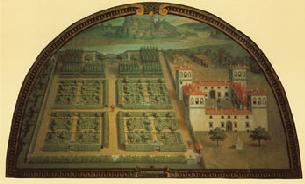
Candida Martinelli's Italophile Site

Main
Page This family-friendly site celebrates Italian culture for the enjoyment of children and
adults. Site-Overview
Portrait of Cosimo I, father of Francesco and Ferdinando, by Bronzino
Francesco I de' Medici (1541-1587) eldest son of Cosimo and Eleonora,
became regent for the Grand Duke of Tuscany in 1564, 10 years before his father's
death. The family, including
Francesco's wife, the
sister of the Emperor Massimiliano II, who had be instrumental in
getting the de' Medici the Grand Duchy title, moved between the Palazzo Pitti,
apartments in the Palazzo Vecchio, and other Palaces and country
estates. Francesco's first wife, the mistreated Giovanna These two portraits of Francesco are gloomier than the
previous children's portraits, and it's said the difference is because
of Francesco's famously dark and capricious character. He
has his father's forehead, but his mother's fine chin.
BRONZINO, Agnolo
After his father's death,
Francesco let the Austrian and Spanish branches of the Hapsburg royals
gain control over much of his Grand Duchy, while he entertained himself
with science (alchemy) and other hobbies, like setting up
Majolica and glassware factories. The
ceramics came to be known as Medici ceramics.
His
glassworks, and one set up by his father in The Uffizi, were manned by
Venetian glassblowers who came
secretly
to Florence during the summer
months when their Venetian glass factories were ordered shutdown.
They had to come in secret because it was illegal for them to transfer
the valuable technical knowledge outside of Venice. They
were paid very well for their efforts.
The main Florentine glassworks were eventually at
Casino di San Marco, and artistic glass objects were often produced as
gifts for foreign dignitaries and for the Grand Duchy's properties.
One of Francesco's better known hobbies was his Venetian lover, Bianca Cappello.
It's said he arranged for the death of Bianca's Florentine husband so he
could have her all to himself.
After
Francesco's wife died suddenly at the young age of 30 (yes,
people did assume she was murdered, but no, it's not yet been proved) he married Bianca,
his longtime lower,
against the family's wishes.
Bianca Cappello di Bonaventuri by Bronzino
Francesco may have gone to such
lengths because he and his first wife had failed to produce a male heir.
He clearly hoped he could produce one with Bianca, a woman he also
happened to love. Piero adopted Bianca's daughter, Pelligrina.
Pelligrina, Bianca's daughter, Piero's adopted daughter
Bianca was a crafty one, who
when she realized they could not conceive children together (because of
syphilis, possibly), purchased
a child from a poor woman and tried to pass him off as their
child saying a fairy-goblin brought him, or some such nonsense.
Bianca's
son Antonio
Bianca
appears to have been a captivating woman, otherwise it would be
difficult to explain why her husband, rejecting the story, then adopted
the boy and her daughter by her husband. She was captivating and
he was desperate for an heir.
Francesco I was a de' Medici in more than the assassinations and
despotism (he dismantled the Florentine system of justice). He
was patron to artists and architects.
He had the architect Buontalenti expand Gli Uffizi to hold the
de' Medici art. He also had an extravagant garden installed above
the Loggia dei Lanzi for special functions and for the relaxation of the
de' Medici family in the evenings, and had a theatre built inside Gli
Uffizi for entertainments for he and his guests. The theatre and
garden are both long gone.
Francesco I built and decorated Villa Pratolino for his mistress /
second wife, Bianca. The paths you see in the lunette below
crisscrossing the 74 acre estate, lead to elaborate water features
designed like the villa by Buontalenti, and decorated by Giambologna, to
make it into a fable-like world for Bianca.
The villa and grounds
went to the successors of the de' Medici, who sold it in 1872 to the Demidoff family. The villa was in such a bad state of repair, it
was torn down. The Demidoffs restored the servants' villa
(possibly the villa in the bottom right of the lunette) into their home,
Villa Demidoff.
They also restored the much-altered gardens as much as
possible. In 1981, it was purchased by the state and is now open
to the public.
To pay for all this, and the money the
Emperor demanded of Tuscany in tribute, Francesco I taxed the Tuscans terribly, not making
himself an especially popular Grand Duke.
Remember the villa that Alessandro Il Moro took possession of, the Villa della Petraia?
In 1568, Cosimo gave it to his younger son, Ferdinando, who took Holy
Orders, which was the second-son custom by now.
As Cardinal Ferdinando, he had Buontalenti re-build the villa, and
Tribolo design and
construct the classic Italian gardens. The villa remained a
favorite spot for the de' Medici and their later successors, eventually
being donated to the state in 1919. The grounds are open to the
public. Click on this link for more about
Villa della Petraia.
Francesco I died, officially, of malaria in 1587 on nearly the same day as
Bianca, at the Villa Poggio a Caiano.
This has lead to rumors that they were murdered by
order of Cardinal Ferdinando, Francesco's younger brother.
If
he did have his brother killed, the idea was obviously to prevent
Francesco's adopted son from taking over the family. At the
time of Francesco's death, his adopted son was 11 years old and too
young to take the family title. So Ferdinando
(1549-1609) became the new Grand Duke of Tuscany. Recent excavations in the de' Medici crypts may settle this
story one day. One thing is certain, the despised Bianca (the
youngest brother, Piero, called her 'the witch') was denied a burial
in the family crypt, and buried elsewhere. It is her body that
will be tested for poisons to hopefully settle the story. There's a well-accepted story that younger brother Piero had his wife's lover murdered, then strangled her when she was
grieving her lover's death (Piero's sister was strangled by her
husband for taking lovers). Piero was said to be a playboy like
his father, and his father married him off to Elenora, a childhood
playmate and cousin, because his father wanted to hide from the
gossiping public that she was pregnant with Cosimo's child. Piero
and Elenora lived a loveless marriage, each with many lovers. I bet the Tuscans were very glad he
wasn't next in line for Grand Duke! In the end, they were pleased
with Ferdinando's rule as Grand Duke. This book by a noted historian, recounts the murder story and the story of
Isabella, another of Cosimo's daughters. Before this time, Ferdinando had lived mainly in Rome. He had purchased and developed a Villa
now known as the Villa Medici at
Rome, and today home to the French Academy of Art. He had also begun an
art collection that he brought back with him to Florence. Ferdinando was supposedly ordained a Cardinal at the age of 14, but gave up the Holy Orders to become Grand
Duke of Tuscany at the age of 38. All the
accounts in Catholic Italy say,
however, that he never really took the Holy Orders, and was only
pretending to be a Cardinal, it seems. The only explanation I can think of for this silly story is that Italy, especially back then, was a very
Catholic place, and perhaps this was the cover story to make it
seem not so terrible for him to abandon
the religious life to become Grand Duke.
Becoming Grand Duke freed Ferdinando to marry, which
he did with Cristina di Lorena, the
grand-daughter of Caterina de' Medici, the last legitimate heir of
Lorenzo the Magnificent.
He joined together the two sides of the family with his marriage. Wedding Banquet of Ferdinand
Ferdinando is referred to in Tuscan history with respect for a reign
that was intelligent, prudent, tolerent and peaceful. His life at
court with Christine of Lorraine was considered an example of morality,
grace and good taste. Ferdinand I made Palazzo Pitti the family's principal home,
rather than live in the apartments in Palazzo Vecchio. He
had painters decorate many of the rooms with fresco series. Over
the course of his time as Grand Duke:
Ferdinando also made a change with the Old Bridge
that has remained a feature of it to this day.
Tanners and butchers used to live and work in the shops on the Old Bridge,
Il Ponte Vecchio, at that time. Tanners used horse urine to tan the leather,
then dumped the remains into the river. The butchers no doubt
dumped the animal remains and blood into the river too.
Ferdinando
and his family
objected to the odors, which reached them even in the corridor, and they
objected to the filthy business being located on such a special
Florentine monument. Ferdinando saw to it that the rents on the bridge shops
were raised until only jewelers could afford
the location. They remain there today.
He added exhibitions to the Gli Uffizi that fitted with his tastes and interests of the day, science
and men of science, the discovery of the world as shown by a large map
collection, a room for scientific instruments, and a laboratory where
artisans crafted fine art from stones and metals. He expanded the
de' Medici decorations in the Basilica of San Lorenzo. He supported
the musical arts, staging in the Boboli Gardens behind the Pitti Palace
the earliest precursors of today's Lyric Opera. Ferdinando I also commissioned Buontalenti to build Villa Dell'Ambrogiana in
1587 as his shooting lodge.
That's the Arno river in the
background. The villa is situated in Ambrogiana, next to Montelupo,
outside Florence. Montelupo is an old ceramics center that celebrates it's history
every year with an International Ceramics Festival. Oddly, in the1800s
the villa was turned into a prison hospital for the mentally
ill. Today it is open to the public.
Ferdinando's marriage to a French royal was a conscious decision to
align the family more directly to the French, to restrict the power of
the Spanish crown. With this same intent, Ferdinando arranged the
marriage of Francesco I's daughter (by his first wife), Marie de' Medici, to Henri IV the
King of France.
Ferdinando also loaned large sums of money to
Henri IV and convinced him to convert to Catholicism. But Henri IV
never repaid the loans, hurting the de' Medici bank, starting its
decline.
The Tuscan's lost a wonderful Grand Duke when Ferdinando died suddenly at the age of 60 in 1609.
Marie de' Medici, mother of French King Louis XIII, and a
trouble-maker
Marie was famed for her beauty as a young woman, and married off in 1600 at the age of 27. She was called the King's
Consort, because her cousin Margarite, daughter of Caterina de' Medici,
retained the title of Queen after divorcing Henri IV. On the death of King Henri IV ten years later, Marie became Regent in
the name of her young son, King Louis XIII. Marie was a true de'
Medici. She shocked the French court with: To the next section:
The Age of Reason and The Enlightenment, The Decline of de' Medici Reason and Enlightened
Governance

The
de' Medici Dynasty
![]()
The family's history parallels
Italy's history. I've divided it into sections listed in the left
column.
This concise history is a helpful guide to read before
traveling to Florence and the Vatican.

The de' Medici Dynasty and Italian History
The Late-Middle-Ages, Early Renaissance, Giovanni: The Founder
The Early Renaissance, Cosimo and Lorenzo: The Elders
The High Renaissance, Piero and his son, Lorenzo the Magnificent
Florentine Independence and the End of the
Florentine Renaissance, Piero II and Lorenzo II in Exile
The Roman Renaissance, Cardinal Giulio de' Medici and Pope Leo X
(Giovanni de' Medici)
The End of Florentine Independence, Pope Clement VII (Giulio de' Medici), Alessandro, and
Caterina de' Medici
The Late Renaissance, The Grand Duke and Duchess of Tuscany: Cosimo de' Medici
and Eleonora di Toledo
The Age of Discovery, Francesco and Ferdinando: Two Very Different Brothers
The Age of Reason and The Enlightenment, The Decline of de' Medici Reason and Enlightened
Governance
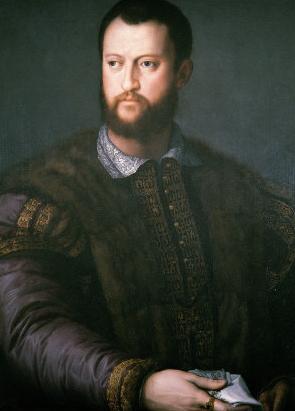
The Age of Discovery
Francesco and Ferdinando: Two Very Different Brothers
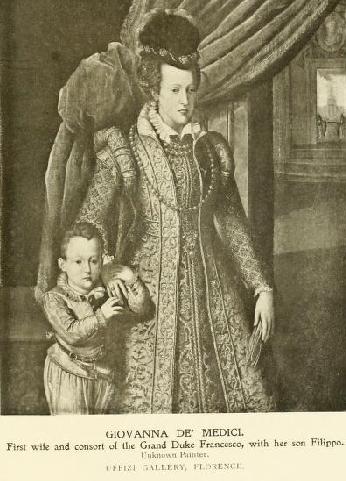
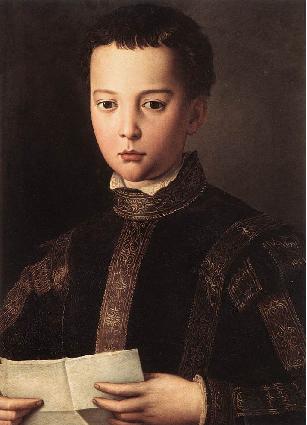
Portrait of Francesco I de' Medici (age 10)
1551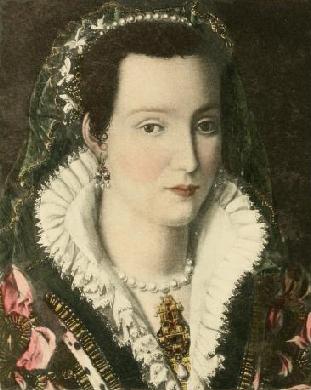
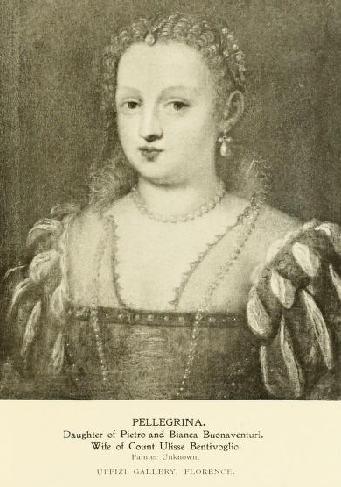
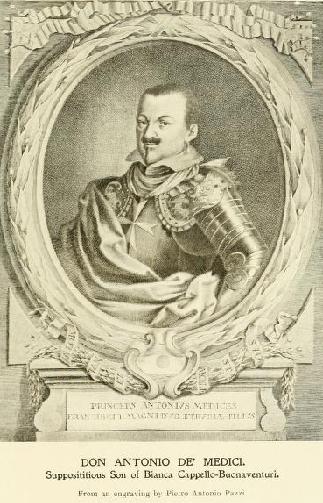
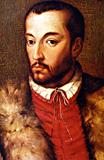
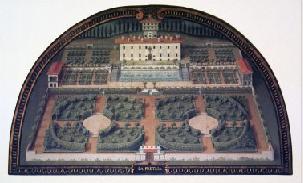
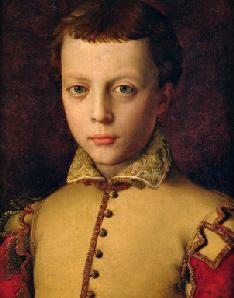
Portrait of Ferdinando de' Medici, age 10 (1549-1609) (Ferdinand I, Grand Duke of Tuscany)
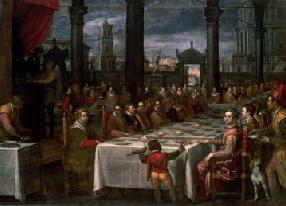
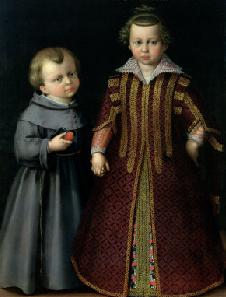
![]()
Francesco and Caterina de Medici, two of Ferdinando I's many children
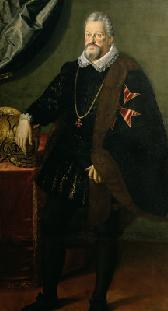
![]()
Portrait of Ferdinand I De' Medici
